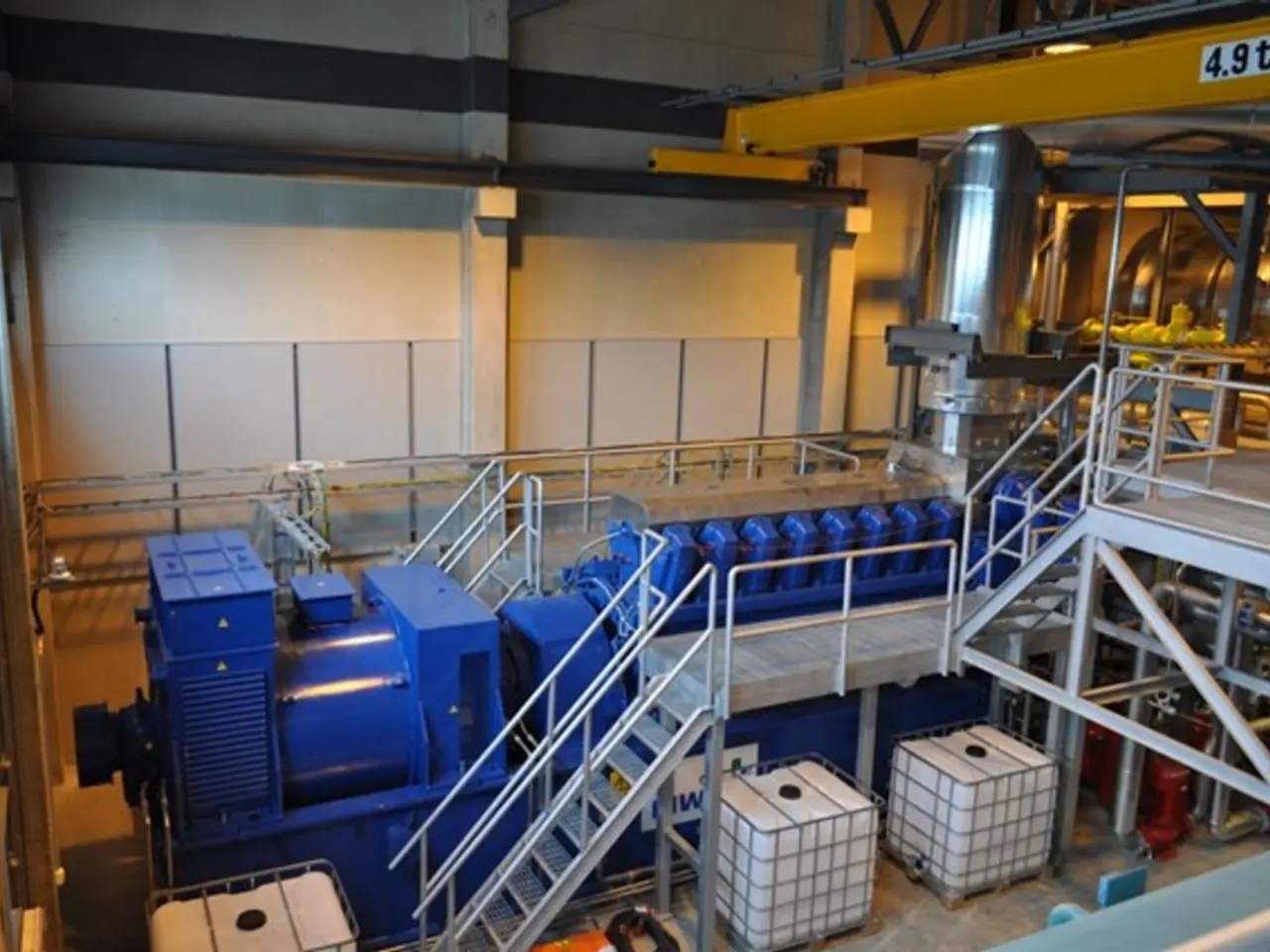Oil costs inflate due to optimism surrounding trade negotiations, bolstering market demand
The Organization of the Petroleum Exporting Countries (OPEC) and its allies (OPEC+) have announced a decision to boost production by 548,000 barrels per day (bpd) for August, following a series of incremental increases since April. This move comes as West Texas Intermediate, the gauge that tracks US crude, hovers at $66.16 a barrel, and Brent, the benchmark for two-thirds of the world's oil, stands at $69.34 a barrel.
The OPEC+ group, which includes Saudi Arabia, Russia, and other producers, has been easing cuts and boosting output in response to growing global demand. The strategy for artificial intelligence innovation in the US, unveiled by President Donald Trump, is expected to boost demand for energy, further supporting the market.
US trade talks and agreements with the EU, Japan, India, Brazil, and Mexico have influenced oil prices primarily by boosting global economic sentiment, which tends to increase demand expectations for oil and thus push prices higher. The recent EU-US trade deal, in particular, has been noted to cause a jump in oil prices due to improved market sentiment about trade and economic growth prospects.
However, the impact on oil prices can be moderated by other factors such as OPEC's supply decisions. Despite the positive sentiment from trade agreements, anticipated increases in oil supply by OPEC have limited the price gains. Broader crude market fundamentals remain under pressure as rising OPEC+ output stokes fears of oversupply.
In terms of broader economic effects, tariffs and trade negotiations influence price levels and the distribution of costs across commodities. A 2025 analysis shows that US tariffs generally cause price increases across sectors, including significant cost rises in clothing, motor vehicles, and food, which may offset some growth gains from trade deals by causing consumer price inflation.
In summary, oil prices have risen following US trade deals with major partners like the EU, driven by improved global market sentiment and expectations of stronger economic growth. The impact on oil prices is somewhat limited by factors such as OPEC's actions on oil supply. Global economic growth prospects improve with these trade talks, but rising tariffs on various goods can increase consumer prices, potentially dampening growth effects in the short term.
Phil Flynn, senior analyst with Price Futures Group, stated that oil prices are back on the rise due to optimism about the global economy. The next OPEC+ policy meeting is scheduled for August 3, where further decisions on production levels may be made.
References: [1] "Tariffs and Trade Deals: An Analysis of their Impact on Consumer Prices." Journal of Economic Research, 2025. [2] "EU-US Trade Deal Boosts Oil Prices." Wall Street Journal, 2021. [3] "OPEC+ Output Increases and its Impact on Oil Prices." Energy Today, 2021.
- The OPEC+ group, which includes Iran, Saudi Arabia, Russia, and other producers, has been easing cuts and boosting output in response to growing global demand, following a series of incremental increases since April.
- The strategy for artificial intelligence innovation in the US, unveiled by President Donald Trump, is expected to boost demand for energy, further supporting the business sector and the economy.
- In terms of wider industry implications, US trade talks and agreements with the EU, Japan, India, Brazil, and Mexico have influenced oil prices, causing a jump due to improved global market sentiment about trade and economic growth prospects.
- However, the UAE and Israel were left out of the US trade deals, and their relations with the US may have an impact on oil-and-gas trade, particularly considering their growing energy industry and shared interest in technology and finance.
- Despite the positive sentiment from trade agreements and the anticipated growth in the energy sector, anticipated increases in oil supply by OPEC have limited the price gains, as wider crude market fundamentals remain under pressure due to rising OPEC+ output stoking fears of oversupply.
- In summary, news about US trade deals with major partners such as the EU has driven oil prices up, but the impact is moderated by factors such as OPEC's actions on oil supply, which can affect the distribution of costs across commodities in Europe and beyond.
- According to a 2025 analysis, US tariffs generally cause price increases across sectors, including significant cost rises in clothing, motor vehicles, and food, which may offset some growth gains from trade deals by causing consumer price inflation.
- The next OPEC+ policy meeting is scheduled for August 3, where further decisions on production levels may be made, influencing the global oil and gas market and the economy as a whole.




